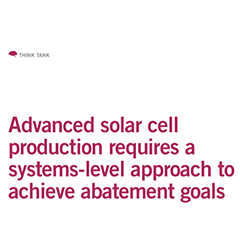Solar panel manufacturers strive to minimize cost and maximise efficiency of their modules. Their success is confirmed by the substantial decrease in $/Wp factor for the modules. In 2006, crystalline silicon based module prices were approximately 5.2$/Wp. By 2017, this had dropped to 0.42$/Wp, over an order of magnitude decrease in ten years.
There has also been a massive relocation of the cell and module manufacturing industry. In 2006, China and Taiwan produced ~7% of the world production of solar modules as expressed as MWp. At that time, over 40% of production was in Japan, and over 30% in Europe. By 2017, China and Taiwan dominated module manufacturing, with over 70% of the world production, ~60% of that being in China alone. Both Japan and Europe had dropped to less than 5%.
It is important to stress that $/Wp values are dominated by availability and cost of capital, land prices, environmental regulatory restrictions, and production scale – these parameters contribute to operating costs more than labor.
Module efficiency contributes to the $/Wp performance indicator. The table provides absolute and relative module efficiencies.
The best heterojunction modules are 50% more efficient than those modules based on thin films.
The Chinese government has been very actively promoting development of its manufacturing industries. Local manufacturing has been encouraged not only by the supply of cheap capital, but also by increased land availability. The installation of solar modules has been encouraged in China, like many other countries, by the implementation of feed in tariffs (FITs – long-term agreements and guaranteed pricing tied to costs of production). However, also like many countries, as the cost of the power generated by solar technology dropped, the Chinese government has reduced the FITs. In 2015, the average FIT was 0.95 RMB (0.95 Chinese yuan = $US 0.15)/kWh. In June 2018, this was dropped to between 0.65 to 0.75 RMB ($US 0.1-0.12)/kWh.
The Chinese government has also directed the market to encourage the manufacture of the modules using more efficient solar cells by adopting differential FITs. One such cell technology, passivated emitter and rear cell (PERC) has been encouraged by this differential tariff approach.



























